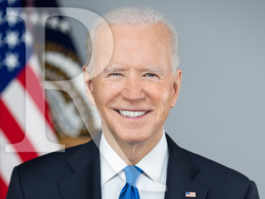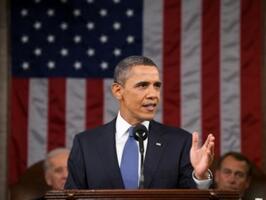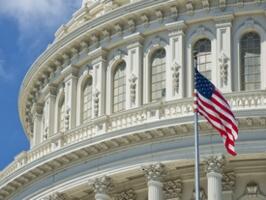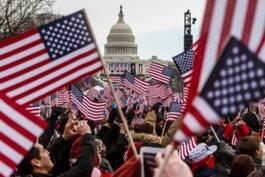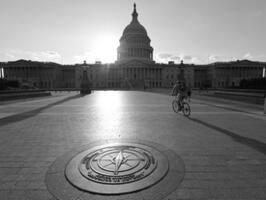Voters Think Obama’s Plan Makes More Middle Class Taxes Likely
President Obama in his State of the Union address last night proposed $320 billion in tax increases on the wealthiest Americans including raising capital gains and inheritance taxes in an effort to pay for initiatives he says will benefit lower- and middle-class taxpayers. Democrats overwhelmingly support the president’s plan, but most voters suspect it will lead to more taxes on the middle class as well.
The latest Rasmussen Reports national telephone survey finds that 49% of all Likely U.S. Voters favor the tax increases the president is proposing, while 41% are opposed. Ten percent (10%) are undecided. (To see survey question wording, click here.)
But a closer look shows that while 84% of Democrats like Obama’s proposed tax hikes, 70% of Republicans and voters not affiliated with either major party by a narrow 45% to 41% margin oppose them.
One reason for the opposition may be that 66% of all voters think that if the president and Congress agree to a plan that raises taxes on wealthy Americans, it’s likely that middle-class taxes will go up, too. Thirty percent (30%) consider that unlikely. But this includes 33% who say a middle-class tax hike is Very Likely and just five percent (5%) who consider it Not At All Likely.
Eighty-five percent (85%) of Republicans and 68% of unaffiliated voters think it’s likely the middle class will end up paying more in taxes. Democrats are evenly divided on this question.
Thirty-nine percent (39%) of all voters believe raising taxes on the wealthiest Americans will help the economy. Thirty-two percent (32%) think it will hurt the economy instead, while 21% say it will have no impact. But again there’s a clear partisan difference of opinion. Sixty-six percent (66%) of Democrats think the tax increases will help the economy, while 59% of GOP voters say they will hurt economically. Unaffiliated voters are evenly divided.
These partisan differences are critical given that Obama for the first time in his presidency is dealing with a Republican-controlled Congress. Voters are evenly divided when asked whether the president or Congress should take the lead on issues important to the nation. But 82% think it is more important for them to work together than to stand for what they believe in.
(Want a free daily e-mail update? If it's in the news, it's in our polls). Rasmussen Reports updates are also available on Twitter or Facebook.
The survey of 800 Likely Voters was conducted on January 19-20, 2015 by Rasmussen Reports. The margin of sampling error is +/- 3.5 percentage points with a 95% level of confidence. Field work for all Rasmussen Reports surveys is conducted by Pulse Opinion Research, LLC. See methodology.
Just before the president’s speech, 68% of voters said he should focus on programs that can be accomplished within current spending levels rather than propose additional spending.
One of the things the president proposes to spend the new tax revenue on is free community college for millions of Americans. Voters tend to like the idea of free community college - as long as it doesn’t cost taxpayers anything.
Thirty-six percent (36%) of voters think Americans pay higher taxes than citizens in most other countries, but just as many (35%) say Americans pay lower taxes than most of those around the globe. Only nine percent (9%) rate the level of taxation as about the same. Nineteen percent (19%) are not sure.
Sixty-three percent (63%) of voters who think Americans pay lower taxes than citizens in most other nations favor the president’s new plan to raise taxes on the wealthy. Fifty-four percent (54%) of those who see the level of taxation as about the same agree. Among voters who believe Americans pay more than those in most other countries, 53% oppose Obama’s plan.
Republicans tend to think Americans are taxed more than others, while Democrats are inclined to say we are taxed less. Unaffiliated voters are almost evenly divided.
Generally speaking, the younger the voter, the more likely he or she is to favor the president’s plan for new tax increases and the more likely they are to think the tax hikes will be good for the economy.
Government employees view the tax increases much more favorably than those who work in the private sector.
Seventy percent (70%) of all voters say they have followed recent news reports about the president’s new tax plan at least somewhat closely, with 34% who are following Very Closely.
Thirty-eight percent (38%) say they would vote for a candidate who promised to oppose all tax increases over a candidate who would only raise taxes on the rich. But slightly more (44%) would choose the candidate who would raise taxes only on the rich. Still, voters have said in surveys for years that cutting taxes and spending are better for the economy than raising them.
Most voters continue to think thoughtful spending cuts should be considered in every program of the federal government, but few think it’s likely that government spending will be significantly reduced over the next few years. In fact, 56% think government spending will go up instead during the president’s last two years in office.
Taxes and spending are the issues voters want the new Congress to tackle first.
Additional information from this survey and a full demographic breakdown are available to Platinum Members only.
Please sign up for the Rasmussen Reports daily e-mail update (it’s free) or follow us on Twitter or Facebook. Let us keep you up to date with the latest public opinion news.
The survey of 800 Likely Voters was conducted on January 19-20, 2015 by Rasmussen Reports. The margin of sampling error is +/- 3.5 percentage points with a 95% level of confidence. Field work for all Rasmussen Reports surveys is conducted by Pulse Opinion Research, LLC. See methodology.
Rasmussen Reports is a media company specializing in the collection, publication and distribution of public opinion information.
We conduct public opinion polls on a variety of topics to inform our audience on events in the news and other topics of interest. To ensure editorial control and independence, we pay for the polls ourselves and generate revenue through the sale of subscriptions, sponsorships, and advertising. Nightly polling on politics, business and lifestyle topics provides the content to update the Rasmussen Reports web site many times each day. If it's in the news, it's in our polls. Additionally, the data drives a daily update newsletter and various media outlets across the country.
Some information, including the Rasmussen Reports daily Presidential Tracking Poll and commentaries are available for free to the general public. Subscriptions are available for $4.95 a month or 34.95 a year that provide subscribers with exclusive access to more than 20 stories per week on upcoming elections, consumer confidence, and issues that affect us all. For those who are really into the numbers, Platinum Members can review demographic crosstabs and a full history of our data.
To learn more about our methodology, click here.
